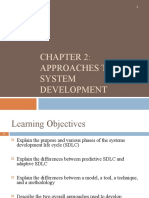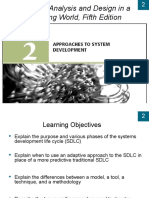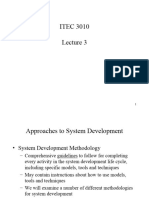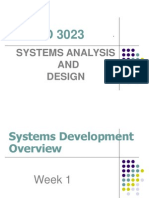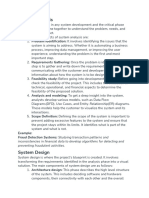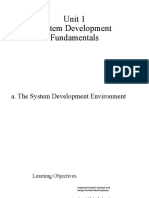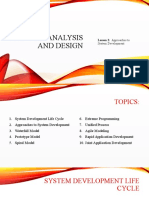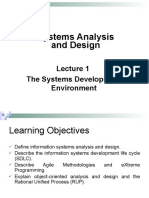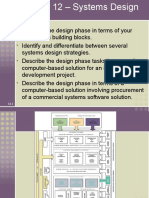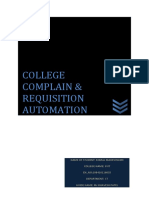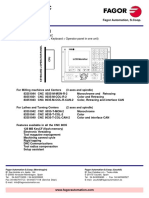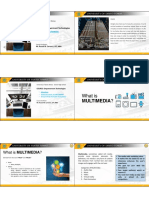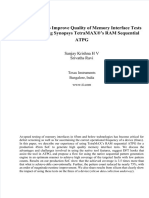0% found this document useful (0 votes)
168 views3 pagesSystem Development Approaches
The document discusses approaches to system development projects. It describes the systems development lifecycle (SDLC) which provides an overall framework for managing systems development. The SDLC includes phases like planning, analysis, design, implementation, and support. There are two main approaches - the predictive approach which assumes projects can be planned in advance, and the adaptive approach which is more flexible for uncertain projects. Traditional predictive models include waterfall, iterative, spiral, and V-shaped models. The document also outlines activities in each phase of the SDLC and compares traditional versus object-oriented approaches.
Uploaded by
Veronica GavanCopyright
© © All Rights Reserved
We take content rights seriously. If you suspect this is your content, claim it here.
Available Formats
Download as DOCX, PDF, TXT or read online on Scribd
0% found this document useful (0 votes)
168 views3 pagesSystem Development Approaches
The document discusses approaches to system development projects. It describes the systems development lifecycle (SDLC) which provides an overall framework for managing systems development. The SDLC includes phases like planning, analysis, design, implementation, and support. There are two main approaches - the predictive approach which assumes projects can be planned in advance, and the adaptive approach which is more flexible for uncertain projects. Traditional predictive models include waterfall, iterative, spiral, and V-shaped models. The document also outlines activities in each phase of the SDLC and compares traditional versus object-oriented approaches.
Uploaded by
Veronica GavanCopyright
© © All Rights Reserved
We take content rights seriously. If you suspect this is your content, claim it here.
Available Formats
Download as DOCX, PDF, TXT or read online on Scribd
/ 3
